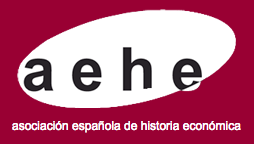The End of the Wheat Problem? The Functioning and Evolution of the World Wheat Market, 1939-2010
DOI:
https://doi.org/10.33231/j.ihe.2022.10.002Palabras clave:
Comercio de trigo, Políticas agrarias, Comercio agrario, Acuerdos comerciales internacionales, F140, N50, Q17, Q18Resumen
Las perspectivas para el comercio internacional de trigo en los años inmediatamente anteriores a la Segunda Guerra Mundial eran poco halagüeñas. En los años treinta el comercio y los precios se habían desplomado y numerosos países habían implementado medidas para hacer frente al llamado «problema triguero». Sin embargo, en 2010 el comercio internacional de trigo era casi diez veces mayor que tras la Segunda Guerra Mundial y las señales de desintegración en el mercado habían desaparecido. Este artículo analiza las razones que explican la extraordinaria expansión del comercio de trigo entre 1939 y 2010, explora los principales cambios en la distribución de los flujos comerciales y ofrece una explicación a esas transformaciones. La discusión se centra en variables institucionales como las políticas agrarias, el efecto de los acuerdos internacionales y la influencia del cambiante contexto histórico internacional.
Descargas
Publicado
Cómo citar
Número
Sección
Licencia
Derechos de autor 2022 Ángel Luis González-Esteban

Esta obra está bajo una licencia internacional Creative Commons Atribución-NoComercial-SinDerivadas 4.0.
Aquellos autores/as que tengan publicaciones con esta revista, aceptan los términos siguientes
- Los autores/as conservarán sus derechos de autor y garantizarán a la revista el derecho de primera publicación de su obra, el cuál estará simultáneamente sujeto a la Licencia de reconocimiento de Creative Commons Reconocimiento-No comercial-Sin obra derivada 4.0 Internacional que permite a terceros compartir la obra siempre que se indique su autor y su primera publicación esta revista, y no permite hacer uso comercial de la misma ni tampoco obras derivadas.
- Los autores/as podrán adoptar otros acuerdos de licencia no exclusiva de distribución de la versión de la obra publicada (p. ej.: depositarla en un archivo telemático institucional o publicarla en un volumen monográfico) siempre que se indique la publicación inicial en esta revista.
Plagio y fraude científico
La publicación de un trabajo que atente contra los derechos de propiedad intelectual será responsabilidad de los autores/as, que serán los que asuman los conflictos que pudieran tener lugar por razones de derechos de autor. Los conflictos más importantes pueden darse por la comisión de plagios y fraudes científicos.
Se entiende por plagio:
- Presentar el trabajo ajeno como propio.
- Adoptar palabras o ideas de otros autores sin el debido reconocimiento.
- No emplear las comillas u otro formato distintivo en una cita literal.
- Dar información incorrecta sobre la verdadera fuente de una cita.
- El parafraseo de una fuente sin mencionar la fuente.
- El parafraseo abusivo, incluso si se menciona la fuente.
Las prácticas constitutivas de fraude científico son las siguientes:
- Fabricación, falsificación u omisión de datos y plagio.
- Publicación duplicada.
- Conflictos de autoría.





